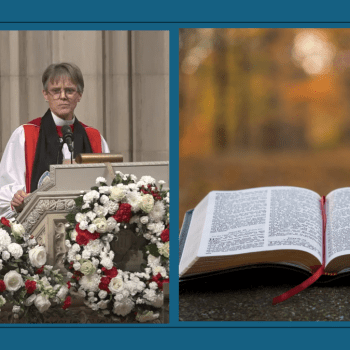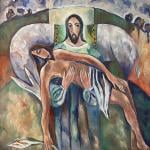The women ran from the tomb afraid. Words failed them. Mark’s Gospel in the midst of a fearful, COVID-19 Easter is exactly the story we need.
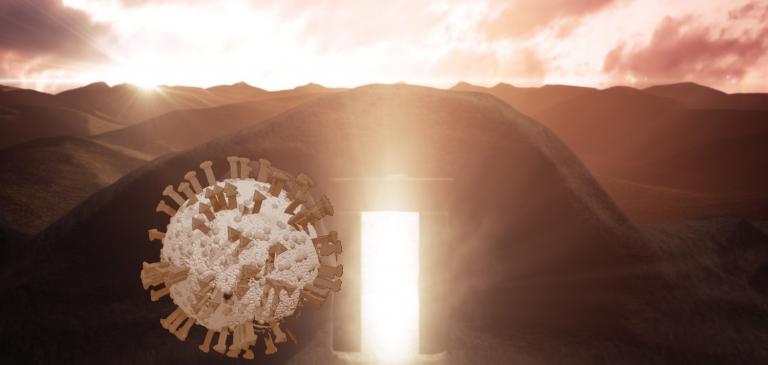
Text: Mark 16:1-8
“So they went out and fled from the tomb, for terror and amazement had seized them; and they said nothing to anyone, for they were afraid.” Mark 16:8
That’s it? That’s how the Gospel of Mark ends? How unsatisfying. What a let-down. Where is the risen Jesus? Where are the stories of his appearances to Mary Magdalene, to the followers on the road to Emmaus, to the disciples on the fishing boat?
Where’s our happy ending?
The Gospel of Mark has none of this. That’s why churches rarely read this Resurrection story on Easter morning. We want the angels. And the faith-inspiring scene of Mary Magdalene hearing the risen Lord speak her name. We want to see Jesus!
But that’s not what we get in the Gospel of Mark.
We do get the women going to the tomb on the morning after the sabbath. We do get the heavy stone rolled away from the tomb. And we do see a mysterious figure dressed in white. We also hear the announcement that Jesus has been raised from the dead. So far, so good.
But when the young man in white gives the women instructions to tell the disciples that Jesus is going ahead to meet them in Galilee, what happens? The women run away in terror, amazement, and fear. And they tell nothing to anyone.
What are we to do with this story?
It’s disconcerting, because the women had been so faithful up to this point. They stayed with Jesus all through his ministry, supporting him financially. These women did not abandon him at the time of his crucifixion like the other disciples did. Yet when it comes time for them to really shine, to step into the role of apostles and announce the resurrection to the disciples, it appears that they fail in their assignment. How can this be? And if this is the case, what does it mean for us as followers of Jesus today?
I’ve been thinking a lot about Mark’s Gospel in the midst of a fearful, COVID-19 Easter.
In Chapter 15 that tells the crucifixion story, the curtain of the temple is torn in two. This symbolizes the ripping of the very fabric of the universe. The divide between the sacred and profane is ripped right down the middle.
In many ways, this virus pandemic has ripped through humanity, tearing asunder the very fabric of our society. Like the disciples after the crucifixion, we are huddled in our homes, afraid and isolated. Today does not feel like Easter. We are not in our churches filled with lilies, hearing soaring music, shouting and singing at the top of our lungs, “He is Risen! He Is Risen Indeed, Hallelujah!”
Instead this is a COVID-19 Easter. We are separated from each other and from our loved ones with whom we usually share this day. Many are out of work and are facing the end of their financial rope. Others have been working almost non-stop to try to find a treatment, test a vaccine. We see pictures of healthcare workers’ faces after 12-hour shifts, their skin marked with red lines from their face masks.
And on Good Friday, we watched with horror the video of the mass graves in New York’s Hart Island off the coast of the Bronx. The families of tens of thousands of people across the globe are experiencing something more like a perpetual Good Friday than an Easter morning.
The women ran from the tomb afraid. Words failed them. Maybe Mark’s Gospel is exactly the story we need.
Later redactors and editors were so uncomfortable with the original ending that they felt the need to tack on not one, but two alternative endings to the Gospel of Mark. They’re a mish-mash of post-resurrection material from other sources to give us the happy ending we so desire. Even Bible editors couldn’t refrain from the Hollywood ending!
But if we are true to the text and really wrestle with what it means, I believe we will find the Good News that we need on this Easter morning.
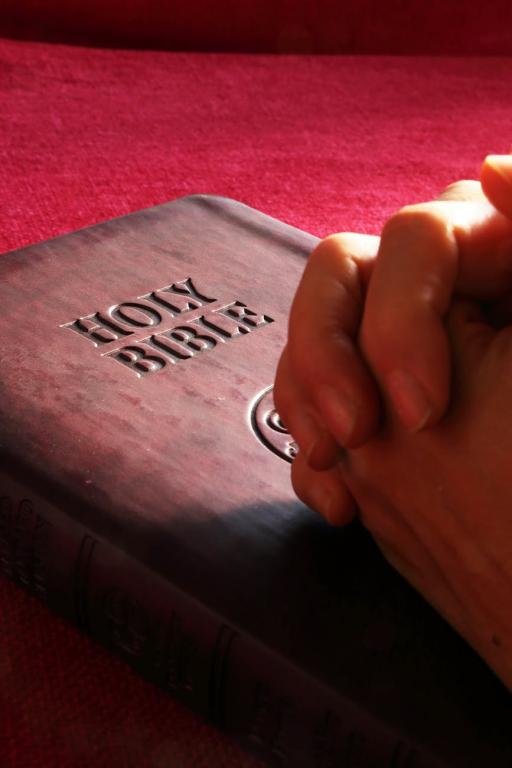
There are truths in Mark’s story of the resurrection that we need to hear.
* Sometimes we fail. And fail spectacularly.
Sometimes we fail in the most important, key moments of life. How ironic that the women did not waver all during Jesus’ life and during his death. But when faced with the good news of the resurrection, that’s when they fled. I have to admit that I find myself alongside these women more often than I should. I often fail to understand the power of God and to trust that God is using that power for good.
* Sometimes there are no words.
The women had the best news to tell. And yet they told no one. They could not find their voice. I can relate to this. When being shown the resurrection in the midst of death, I sometimes turn away inexplicably and find myself mute, unable to give voice to the good news that has been shown to me.
And yet, there’s another truth of Mark’s Gospel.
* The story of the resurrection still comes to us.
The “unhappy ending” of Mark could lead us to despair. But here’s the thing. We are still telling this story, aren’t we? We do hold this Gospel in our hand. How is it that we have this story, if no one ever told the news?
The story of Shawn
Several years ago, I met with a young man in a previous congregation I served who wanted to be baptized. Let’s call him Shawn. Shawn was not raised in the church. It just wasn’t a part of his upbringing or experience. But he met and married a woman named Darlene who was a member of our church, along with her parents, Leonard and Charlotte. Not long after the wedding, Leonard was diagnosed with a very aggressive disease that ravaged his body over a series of months. It was during this difficult time that Shawn and Darlene had their first child, little Fiona. This child’s life and her relationship with Leonard, though all too brief, was such a blessing to him and to all of them.
I’ll never forget when we all gathered at Leonard’s bedside for a service of prayer and commendation, to bless him as he passed from this life. Fiona, only 9 months old, was attentive, alert, and completely engaged in that prayer circle. She was fully present to that holy moment and to her grandfather.
After his funeral, it was only natural for them to have Fiona baptized in the church.
But then Shawn said he wanted to be baptized as well.
This confluence of death and life had a profound effect on him. He had witnessed the care provided by the pastors and members of the congregation to their family. He realized the value of belonging to a church community. So he wanted to be baptized to help raise his daughter in the church.
So we met for several sessions to talk and learn, to ask questions and reflect on answers. At one point, we talked about how he might approach reading the Bible. We agreed that the book itself is so huge, it can be overwhelming. He needed a place to start. So after thinking about it he said, “Well, I really want to learn more about God. I want to get to know God better. And it seems that the best way to do that is to get to know Jesus.
“So I guess I want to start with the part about Jesus.”
I said, “Yes! You got it! If you want to know God, get to know Jesus. That’s what Christianity is all about.” So I pointed him to the Gospel of Mark, which is the earliest, shortest, and most basic gospel. Read Mark, I said, because there you will encounter Jesus.
And then it hit me as we started reading the Gospel of Mark. Just nine verses into Chapter One, do you know what it says? “In those days Jesus came from Nazareth of Galilee and was baptized by John in the Jordan.” Skip ahead to the last chapter.
Where did the young man tell the women to meet Jesus? In Galilee.
Could it be that the author of Mark’s Gospel had another reason for this strange ending? Is it possible that the message from the young man at the tomb was not just for the women and the disciples, but for us? Maybe we are the ones who are supposed to meet Jesus in Galilee. Maybe we are being pointed back to the beginning of the story, to re-read the Gospel in light of what we know from the ending.
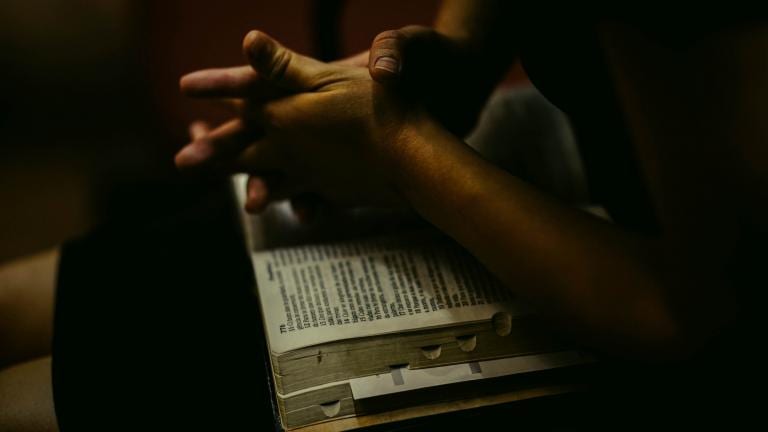
When we do that, we discover that this ending of Mark isn’t really an ending at all! It’s a beginning! It loops back around to the start. And it’s telling us that even when we fail, even when we can’t find the words, even when we are huddled in fear – this is not the end of the story. It’s not the end of our discipleship.
Because here’s the other truth of Mark’s Gospel. The most important truth of all.
Jesus is still risen, even if we can’t recognize it yet.
This is what I told Shawn and Fiona on the Saturday Easter Vigil when they were baptized many years ago. No matter what they face, no matter how wrong the world is, this is not the end of the story. Because Jesus is still risen!
Even when the Leonard’s body failed him, that was not the end of the story. Jesus is still risen. When little Fiona and her daddy Shawn eventually encounter their own failures, that will not be the end of the story. Because Jesus is still risen!
Even in the saddest, most painful moments of our lives, when the curtain of the temple is torn in two, when the fabric of our world is ripped to shreds—this is not the end of the story. Because Jesus is still risen!
Even on this COVID-19 Easter as we watch this virus overcome us, and our leaders fail us, and our voices are choked with grief, anger, and fear so that we cannot even speak—this is not the end of the story. Because Jesus is still risen!
Mark’s Gospel points us back to the beginning.
To the beginning of Earth’s story when God created all things.
The beginning of Israel’s story in Egypt when God brought them out of slavery and oppression.
The beginning of Jesus’ story, in Galilee, entering our broken, violent, failing world to bring us out of our failure and into new relationship with God.
It brings us to the beginning of Fiona’s story when her birth and infancy brought new hope to a dying man.
And it brings us to Shawn’s story – and your story – when we learn that Jesus has already gone ahead of us to Galilee and is meeting us right here in the Bible, and in the church, and in the sacrament of baptism.
We are being called, even in the midst of our failure, to get up, turn around, and continue following Jesus. Back to Galilee. Back to the beginning, back to the basics.
In many ways, this coronavirus crisis has forced us to get back to the basics as well. We are rediscovering (or maybe learning for the first time) how vital it is to just have the essentials of life–our health, a safe home, food on the table, relationships with people who are important to us. And our faith.
The man in white at the tomb still calls to us: “Do not be afraid; you are looking for Jesus of Nazareth, who was crucified. He has been raised; he’s not here . . . He is going ahead of you to Galilee; there you will see him, just as he told you.”
God will meet us in the midst of this. Jesus is still risen and is already ahead of us in whatever we will face.
On this COVID-19 Easter, we are people who have died and risen with Christ. This is why we can live with hope in the midst of the unknown. It’s why we will proclaim the resurrection even when the death counts rise and evil seems to surround us everywhere we turn.
We will continue to proclaim with faith in the midst of fear:
Christ is risen!
He is risen indeed, Hallelujah!
Read also:
The Proximity of Hope: An Easter Sermon
Living in a Maundy Thursday World: COVID-19 and Holy Week
We Are ‘Hosanna People’: Palm Sunday and Coronavirus
When Earth Demands Sabbath: Learning from the Coronavirus Pandemic

Leah D. Schade is the Assistant Professor of Preaching and Worship at Lexington Theological Seminary in Kentucky and ordained in the ELCA. Dr. Schade does not speak for LTS or the ELCA; her opinions are her own. She is the author of Preaching in the Purple Zone: Ministry in the Red-Blue Divide (Rowman & Littlefield, 2019), Rooted and Rising: Voices of Courage in a Time of Climate Crisis (Rowman & Littlefield, 2019), and Creation-Crisis Preaching: Ecology, Theology, and the Pulpit (Chalice Press, 2015).
Leah’s latest book is a Lenten devotional centered on Creation: For the Beauty of the Earth (Chalice Press, 2020).
Twitter: @LeahSchade
Facebook: https://www.facebook.com/LeahDSchade/







